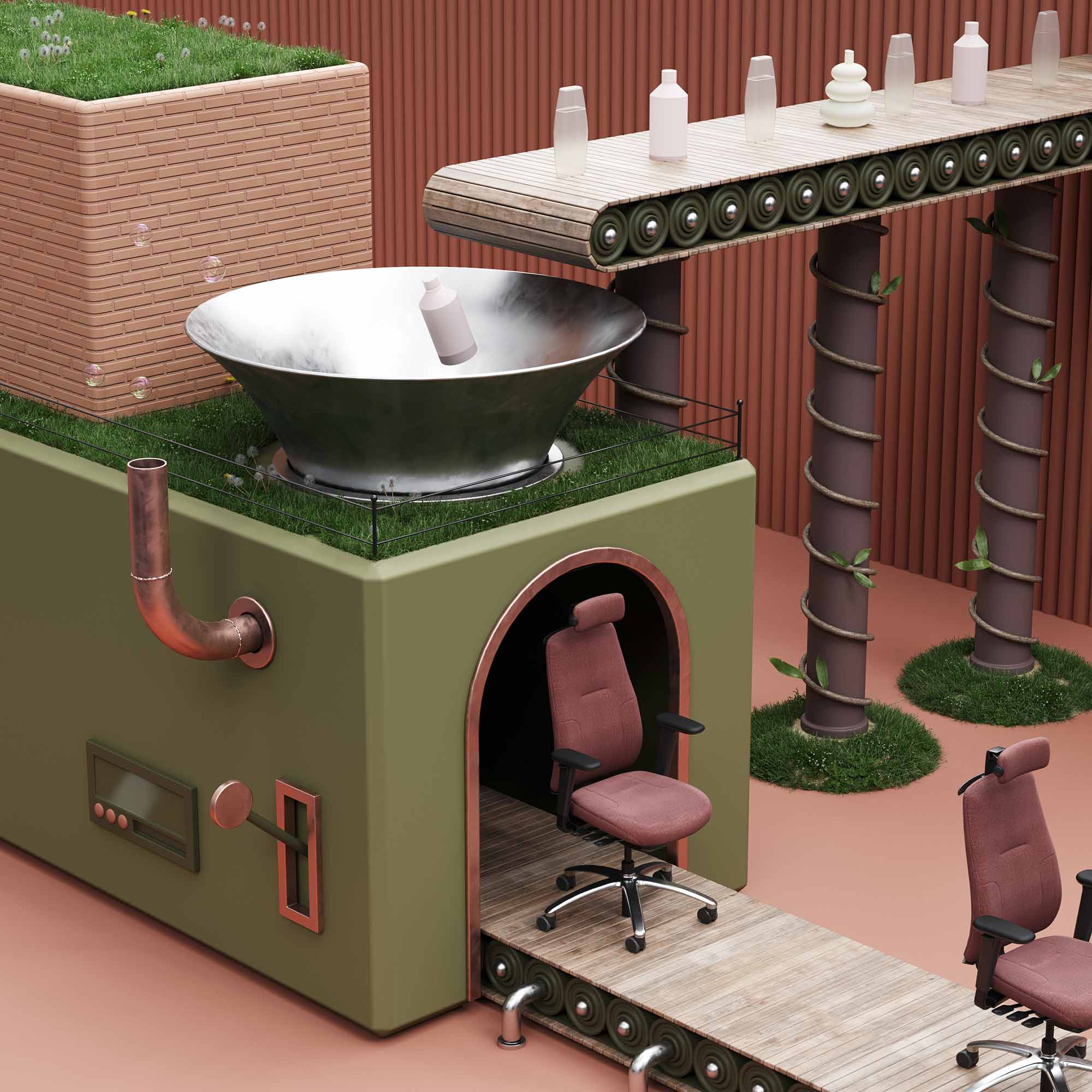
The benefits of using recycled materials | Everything you need to know
It saves energy and reduces waste, so why is there so much waste that isn’t recycled? We explore the benefits and challenges of making products out of recycled materials.
- Sustainability
- Advice & Guidance

Using recycled materials to create new products. It seems like such an obvious answer to the overconsumption of natural resources and huge quantities of waste produced. So what is holding businesses back from fully embracing recycled materials?
As a furniture manufacturer with a rich history of utilising recycled materials, we explore the mutual advantages for us and our customers in making furniture from recycled materials. However, these benefits extend beyond furniture to other products too.
The Benefits:
It saves energy
Producing products from recycled materials consumes significantly less energy compared to manufacturing them from raw materials. This is because recycled materials have already undergone refining and processing once, which is both energy and resource-intensive.
Molded recycled aluminum requires 95% less energy to produce than virgin aluminum, a material that can be recycled endlessly. In the case of steel, that percentage is approximately 70%. Moreover, paper made from pulped recycled paper consumes 40% less energy than paper made from virgin wood fibers.
Looking at the three most recyclable plastic varieties - Polyethylene (PET), High Density Polyethylene (HDPE) and Polypropylene (PP) - the expended energies to produce virgin plastics are X1.7, X3.0 and X3.0 times greater respectively when compared to using post-consumer recycled plastic pellets. A figure which also includes the collection and sorting of waste plastics and the production of sorted recycled plastic pellets.
It reduces carbon emissions and pollution
The ripple effect of less energy-intensive production includes a reduction in carbon emissions and pollutants. Using the same three plastic varieties as an example, the decrease in emissions to create recycled resin versus virgin resin is 67% for PET, 71% for HDPE, and 71% for PP. According to a comprehensive study conducted by the Association of Plastic Recyclers (APR), only four out of a total of 84 examined categories did not demonstrate savings.
When considering metals, recycled steel production as opposed to virgin steel reduces air pollution by 86%, water use by 40%, and water pollution by 76%. Furthermore, producing recycled molded aluminum decreases Co2 emissions by 92% compared to raw aluminum.
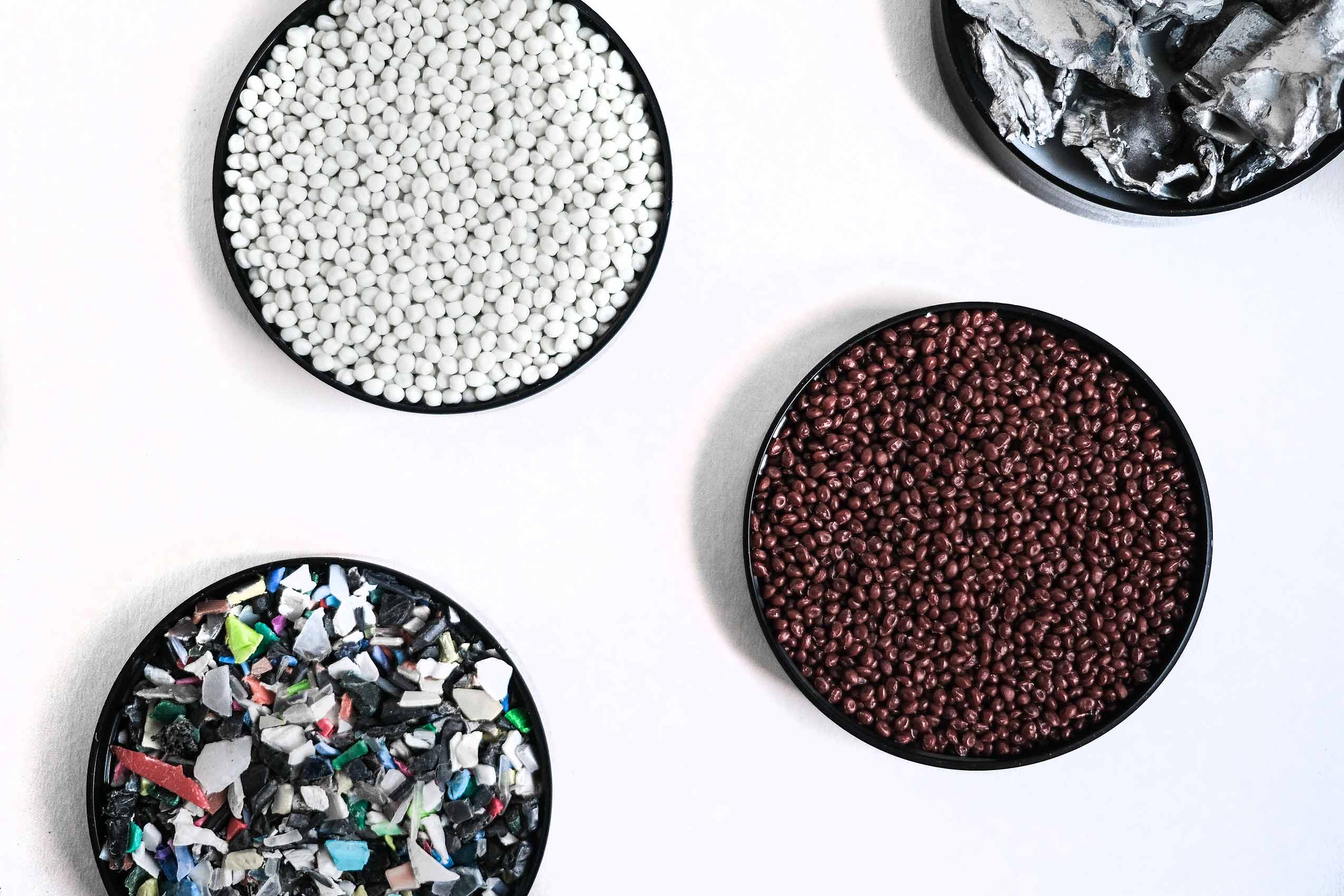
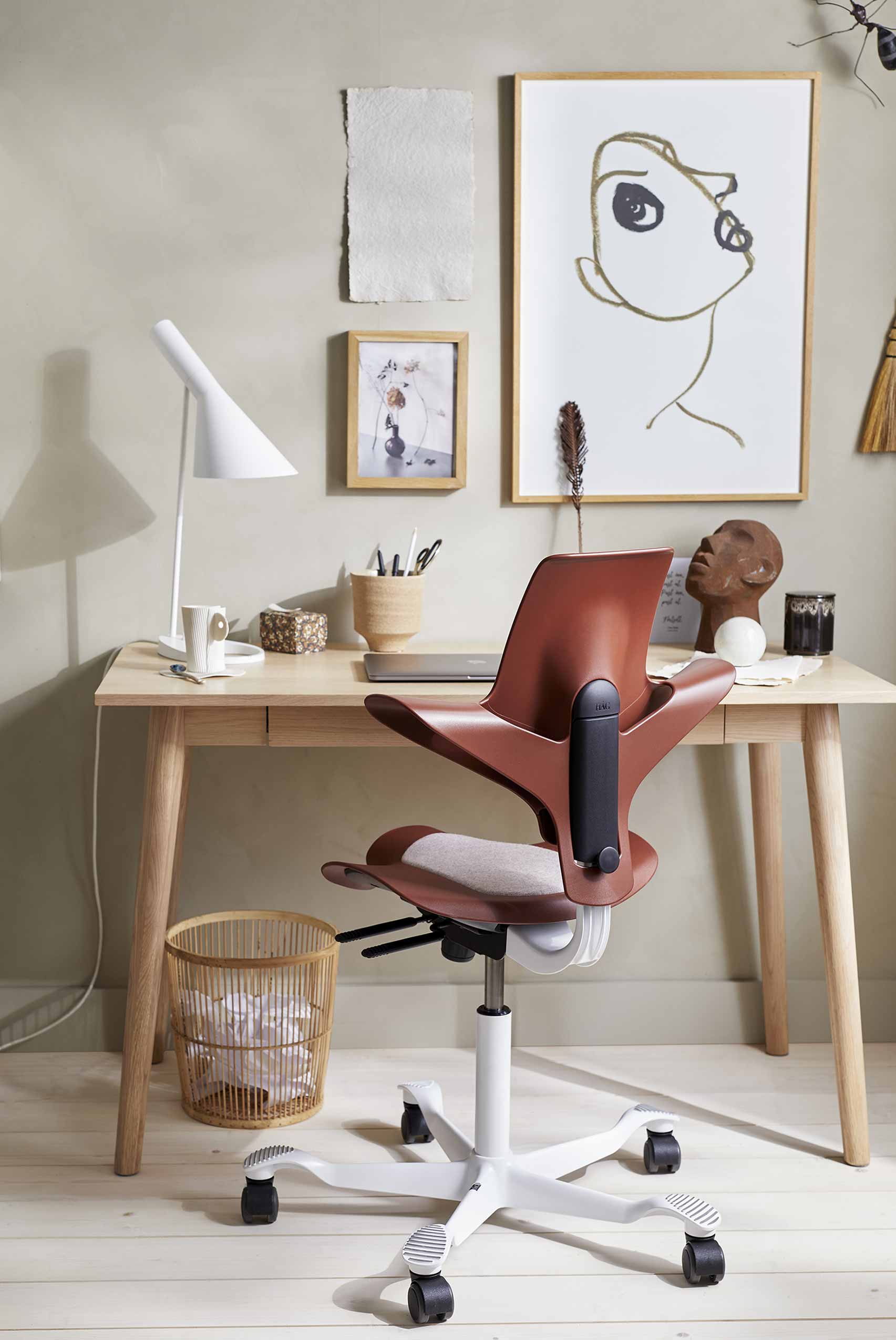
HÅG Capisco Puls is a chair designed by Flokk available with a plastic seat and back made from 100% recycled plastic, sourced from broken snow plough markers.
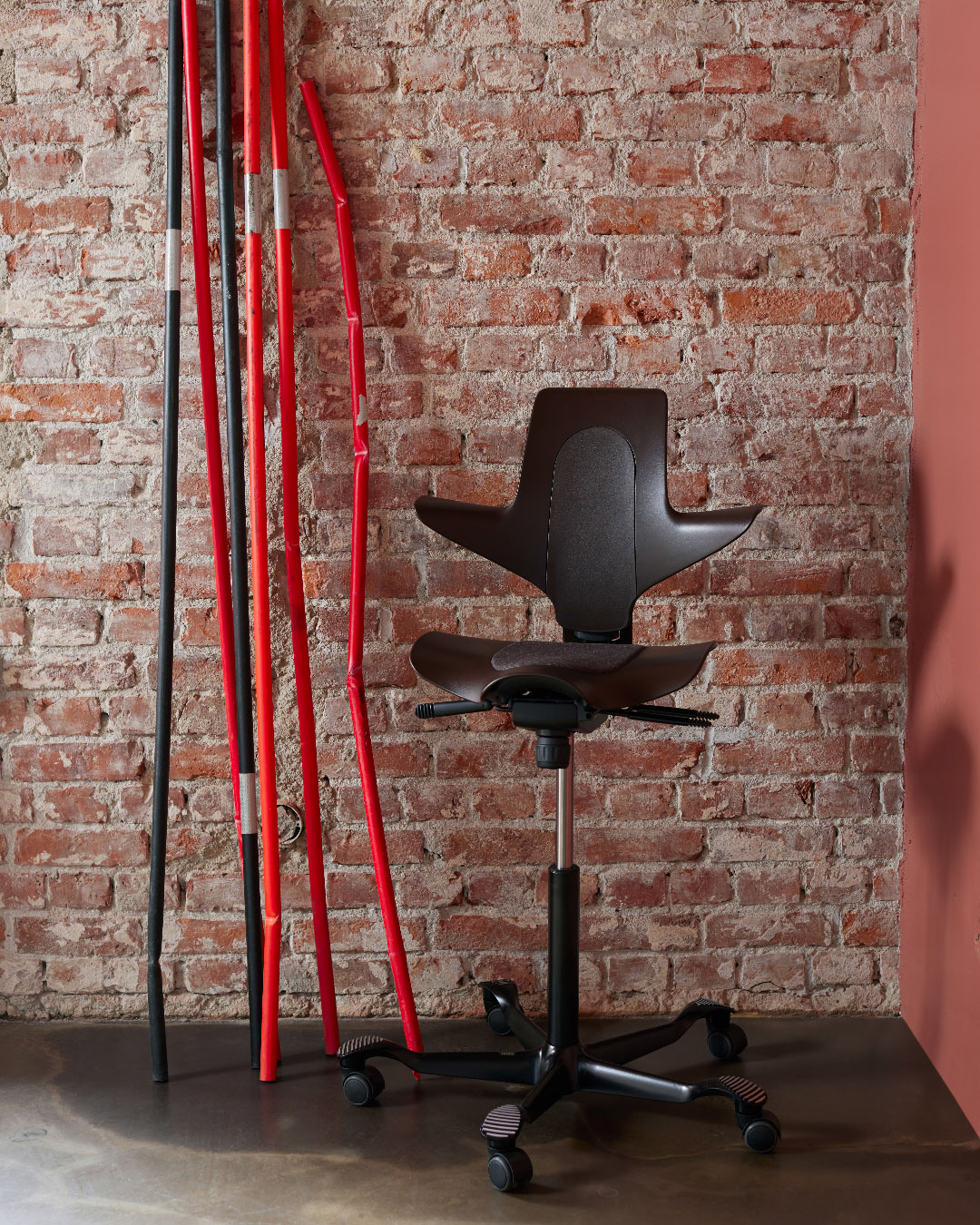
Because it is 100% recycled plastic, each year's batch of plastic is a slightly different colour, depending on the number of each different colour marker pole.
It conserves natural resources
Using recycled materials conserves natural resources that are not infinite. Earth Overshoot Day, which calculates the date each year when humanity begins to extract more resources than the planet can realistically replenish, currently falls on July 25th (as of 2024) - a date that has steadily moved earlier in the year since its inception in 1970. As an alarming reference point, in 1990, Earth Overshoot Day was as late as October 11th.
With a market value of $527billion, the furniture industry consumes a significant amount of materials. Utilising as much recycled content as possible, particularly plastic and metal, is a vital method businesses can employ to reduce the global reliance on virgin materials.
It helps to protect wildlife and nature
Recycling materials reduces the amount of waste that is either incinerated, deposited in landfills, or dumped in natural habitats or waterways. Less than 20% of municipal waste is recycled each year, with significant quantities ending up in landfills. It is estimated that by 2050, worldwide municipal solid waste generation will have increased by roughly 70% to reach 3.4 billion metric tons.
Furthermore, recycling rates actually declined across Europe, Asia, and the US due to the COVID-19 pandemic. Additionally, the pandemic led to a surplus of new waste in the form of personal protective equipment (PPE) and single-use items. Research published in the Proceedings of the National Academy of Sciences revealed that the pandemic resulted in over 8 million tons of plastic waste globally, with more than 25,000 tons of that waste entering the ocean.
The Challenges
The rate of recycling varies drastically between materials. Metal recycling is well established, with current recycling rates of steel at 80%. Europe has the highest recycling Efficiency Rate of any region when it comes to recycling aluminium with a rating of 81%.
Plastic on the other hand has a much lower rate. Of the roughly 8300 million metric tonnes (Mt) of plastic produced since the 1950s only 9% has ever been recycled, with 12% incinerated and 79% in landfill or the natural environment. This is 6,557 million metric tonnes.
It can be more expensive
The cost of using recycled plastic can fluctuate significantly and is dependent on several factors – the price of oil (and subsequently the price of virgin plastic manufacturing), the demand for recycled plastics, and the supply being the most important.
In a Bureau of International Recycling (BIR) 2023 quarterly update, Kay Riksfjord from the Norwegian firm REVAC AS pointed out that incineration costs in Norway “are at their lowest levels for a long while, resulting in a very quiet secondary plastics market”
It requires infrastructure
Unlike metals, which have high recycling rates thanks to established routines, plastics and e-waste pose challenges. The multitude of plastic types makes sorting difficult, and mixing recyclable and non-recyclable plastics reduces their value when resold. Complex items like phone chargers contain valuable materials but are often overlooked in large-scale recycling schemes focused on single-material items like packaging.
In the past, North American and European countries exported millions of tonnes of complex recyclables to China. However, China's 2018 National Sword Policy halted this practice leaving exporting nations with excess waste they couldn't process locally.
The call for greater infrastructure is getting louder, with Henk Alssema chairman of the BIR’s Plastics Committee saying “Calls are becoming louder for regulation to make use of recycled material compulsory; this is the only way to create stability in supply and demand, as well as stability in terms of price.”
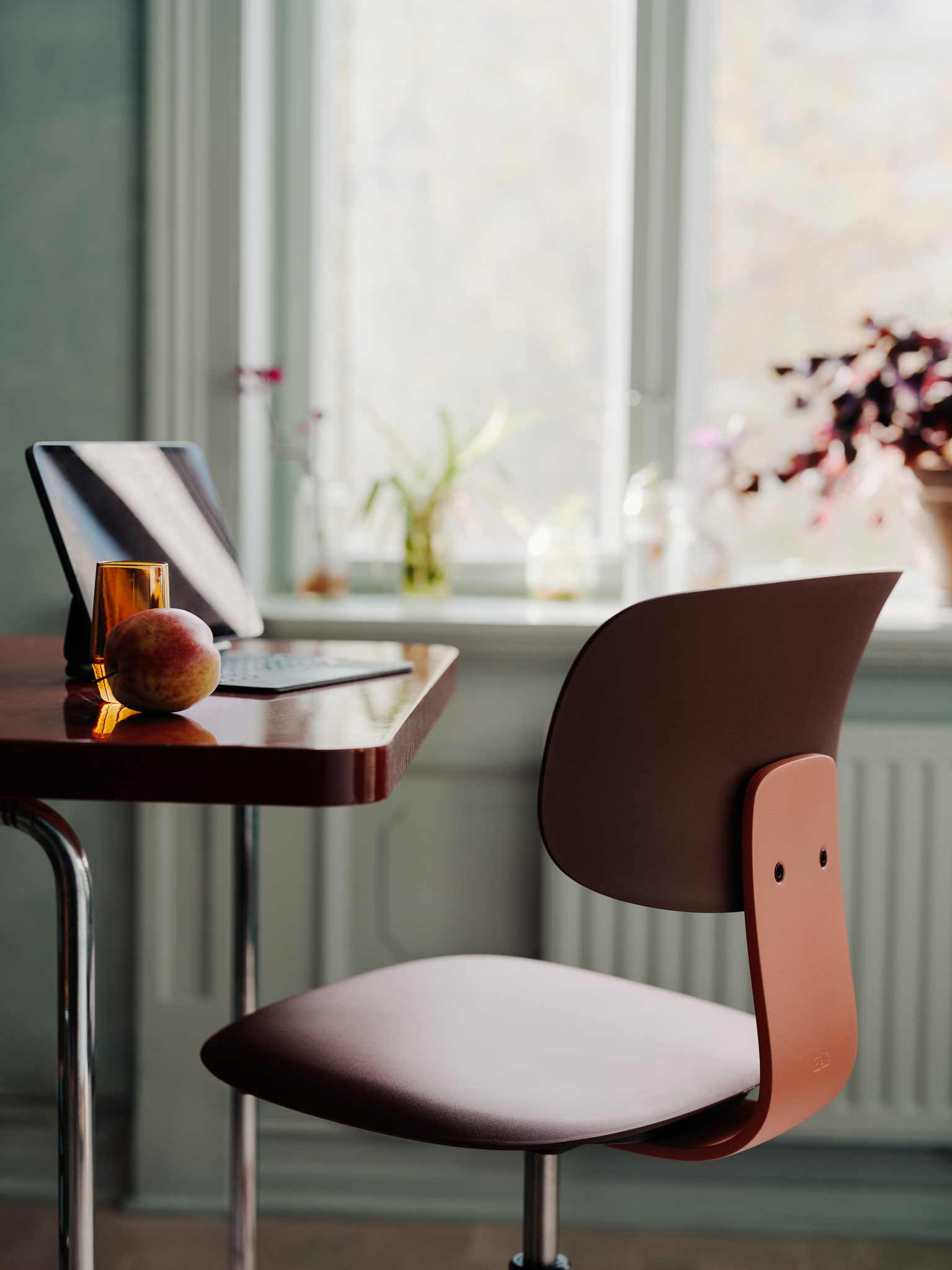
The HÅG Tion is one of the most sustainably designed task chairs available, made from 70-75% recycled materials | Ft. HÅG Tion 2100 in Chestnut/Blush
![RH_New_Logic_close_1[ppt]-1](https://focus.flokk.com/hubfs/RH_New_Logic_close_1%5Bppt%5D-1.jpg)
The RH Logic chair comprises 69% recycled PP plastic, 19% recycled steel, and 94% recycled aluminium | Featured: RH Logic 200
Recycled materials at Flokk
Boosting the use of recycled materials in our furniture stands as one of Flokk's primary sustainability goals. Since 1995, we've progressively incorporated more recycled materials into our designs, aiming for an average of 60% by 2030.
With the 2021 release of HÅG Tion, we achieved 70-75% recycled materials, signaling substantial progress toward our goal. We also introduced colour-sorted recycled plastics, comprising 94% post-consumer plastics, marking a significant breakthrough for our long-term efforts.
This might also interest you
Efficiency and innovation at Flokk: the Turek transformation story
Discover how Flokk transformed its Turek site into an advanced, lean...
The growing importance of responsible supply chains
How Flokk integrates responsible supply chain practices, turning supply...
Flokk introduces two new sustainable chairs made from recycled snow plough markers
HÅG Tion and HÅG Celi join HÅG Capisco in our line up of chairs made using...